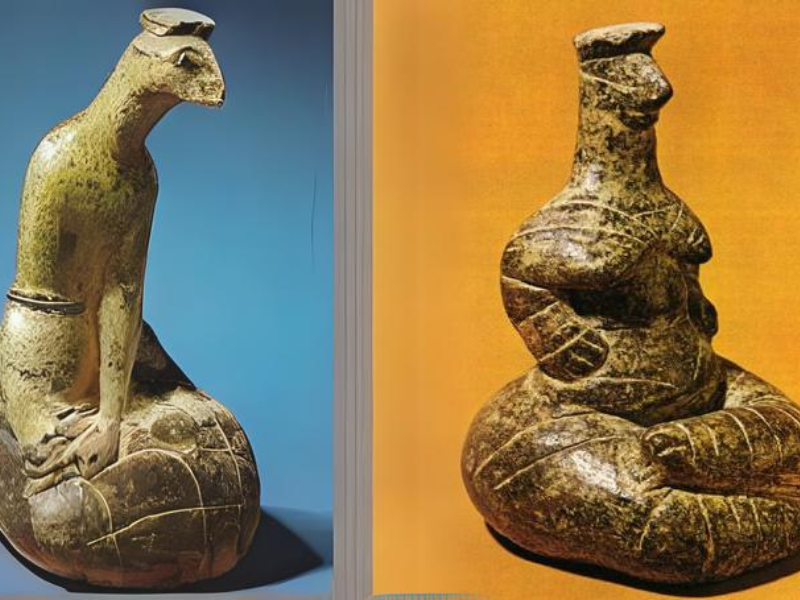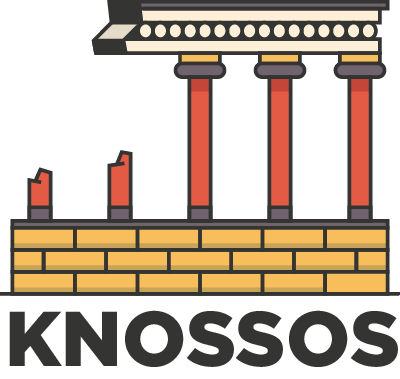Table of Contents
Introduction: Discovering Kephala
Nestled in the embrace of Crete’s rich and varied landscape lies Kephala, an ancient Neolithic Cretan site near the renowned Knossos.
This settlement, dating back to around 7000 BC, serves as a crucial link to understanding the early stages of human civilization in Crete. Kephala is not just an archaeological treasure; it is a gateway to a time when humanity was taking significant leaps forward, setting the foundations of what would become complex societies.
Origins of Kephala: The Neolithic Inhabitants
The story of Kephala begins with the arrival of Neolithic farmers, who ventured from regions likely in or near Anatolia. These early settlers brought with them practices and knowledge that would transform the island’s landscape and its inhabitants’ way of life. They introduced agricultural techniques and domesticated animals, marking a departure from the hunter-gatherer lifestyle that preceded their arrival. The establishment of Kephala was a testament to their adaptability and resilience, carving out a community in the midst of Crete’s rugged terrain.
Architectural Marvels: Constructing a Neolithic Village
The architectural design of Kephala offers fascinating insights into the lives of its ancient inhabitants. The dwellings, primarily constructed from locally sourced mud and reeds, were ingeniously designed to meet the needs of their occupants. These structures, although primitive by today’s standards, were marvels of their time. They reflected a deep understanding of the available resources and an ability to create a stable living environment. The use of mud and reeds was not only practical but also demonstrated the early Neolithic people’s connection to their land and their resourcefulness.
Daily Life in Kephala
Life in Kephala revolved around the rhythms of nature and the demands of a fledgling agrarian society. The villagers engaged in various activities essential for their sustenance and survival. Farming was the cornerstone of their daily life, with the cultivation of crops providing a stable food source. Animal husbandry also played a crucial role, with the rearing of livestock contributing to the community’s food supply and agricultural activities. The crafting of tools and weapons from materials like stone, obsidian, and bone was a common practice, showcasing the skill and ingenuity of these early Cretans.
Artistic Expressions: Figurines and Pottery
The artistic endeavors of the Kephala villagers provide a window into their cultural and spiritual beliefs. One of the most remarkable aspects of their artistic expression is the creation of figurines. These clay figures, often anthropomorphic or zoomorphic, depict various aspects of their daily life and spiritual beliefs. The presence of a goddess flanked by lionesses, for instance, suggests a society deeply connected to its environment and possibly engaged in some form of nature worship. This artistic output is not just a reflection of their skill but also an indication of a society that had the luxury to engage in activities beyond mere survival.
Kephala’s Role in Neolithic Trade and Navigation
Kephala’s strategic location near the coast facilitated its involvement in early trade networks. The use of coastal access points like Amnisos and Katsambas played a significant role in the village’s development, allowing for the exchange of goods and ideas with other communities. This early form of trade was likely rudimentary, based on the barter system, but it was crucial in fostering connections with neighboring settlements and islands. It also indicates a society that was looking outward, eager to explore and engage with the world beyond its immediate surroundings.
Kephala’s Place in Neolithic History
As we unravel the layers of Kephala’s history, we gain invaluable insights into the broader narrative of Neolithic Crete. This ancient village is more than just a collection of ruins; it is a testament to human ingenuity and adaptability. The discoveries made here have significantly contributed to our understanding of Neolithic societies, offering glimpses into the daily lives, cultural practices, and architectural advancements of these early Cretan settlers. Kephala stands as a profound reminder of our shared human journey, from the dawn of agriculture to the complexities of modern civilization.

Trade and Economic Activities in Kephala
One of the most striking aspects of Kephala’s development during the Neolithic period was its gradual involvement in trade. Being situated near key coastal points like Amnisos and Katsambas, Kephala played a role in the early Aegean trade networks. The inhabitants of Kephala utilized their coastal proximity to engage in exchange with other communities, trading surplus crops, livestock products, and crafted goods like pottery and textiles. This nascent trade was not only crucial for economic reasons but also for cultural exchanges, bringing new ideas and practices to the village.
Social Structure and Community Life
The social fabric of Kephala was intrinsically linked to its economic activities. The village’s social structure was likely based on familial clans, with each family contributing to the community’s overall well-being. The collective effort in farming, animal husbandry, and crafting not only ensured survival but also fostered a sense of community and shared responsibility. This kinship-based society was pivotal in maintaining order and stability within the village.
Religious Beliefs and Ritual Practices
The religious beliefs and ritual practices of the Kephala villagers are glimpsed through the archaeological remains, particularly the figurines and pottery. These artifacts suggest a society that held deep spiritual beliefs, possibly revolving around nature worship and fertility cults. The presence of figurines depicting a goddess figure indicates a reverence for female deities, common in many early agrarian societies. These religious practices were likely integral to the villagers’ daily lives, providing a framework for understanding their world and their place within it.
Technological Advancements and Craftsmanship
The Neolithic period in Kephala was marked by significant technological advancements. The villagers’ skills in crafting tools and weapons from stone, obsidian, and bone were remarkable for their time. These tools were essential for farming, hunting, and building, reflecting the community’s self-reliance and ingenuity. The development of pottery was another significant milestone, indicating a shift towards more settled and complex societal structures.
Interactions with Neighboring Communities
Kephala’s interactions with neighboring communities were crucial in shaping its cultural and economic landscape. These interactions, facilitated by trade and shared cultural practices, led to a diffusion of ideas and technologies. Such exchanges were fundamental in the evolution of Neolithic society in Crete, fostering a broader sense of identity and cooperation among different settlements.
Legacy of Kephala in Neolithic Crete
The legacy of Kephala in the broader context of Neolithic Crete is profound. As one of the earliest known settlements on the island, it provides invaluable insights into the beginnings of organized society in the region. The village’s development from a small agrarian community to a participant in early trade networks exemplifies the dynamic nature of Neolithic societies. The findings from Kephala have greatly contributed to our understanding of the Neolithic period, offering a clearer picture of the origins of complex societies in the Aegean.
Conclusion: Reflecting on Kephala’s Historical Significance
In conclusion, the exploration of Kephala offers a comprehensive view of life during Neolithic times in Crete. From its humble beginnings as a small farming community to its involvement in early trade networks, Kephala stands as a testament to human resilience and adaptability. Its legacy continues to inform our understanding of the Neolithic era, highlighting the remarkable journey of our ancestors and their contributions to the tapestry of human history.


